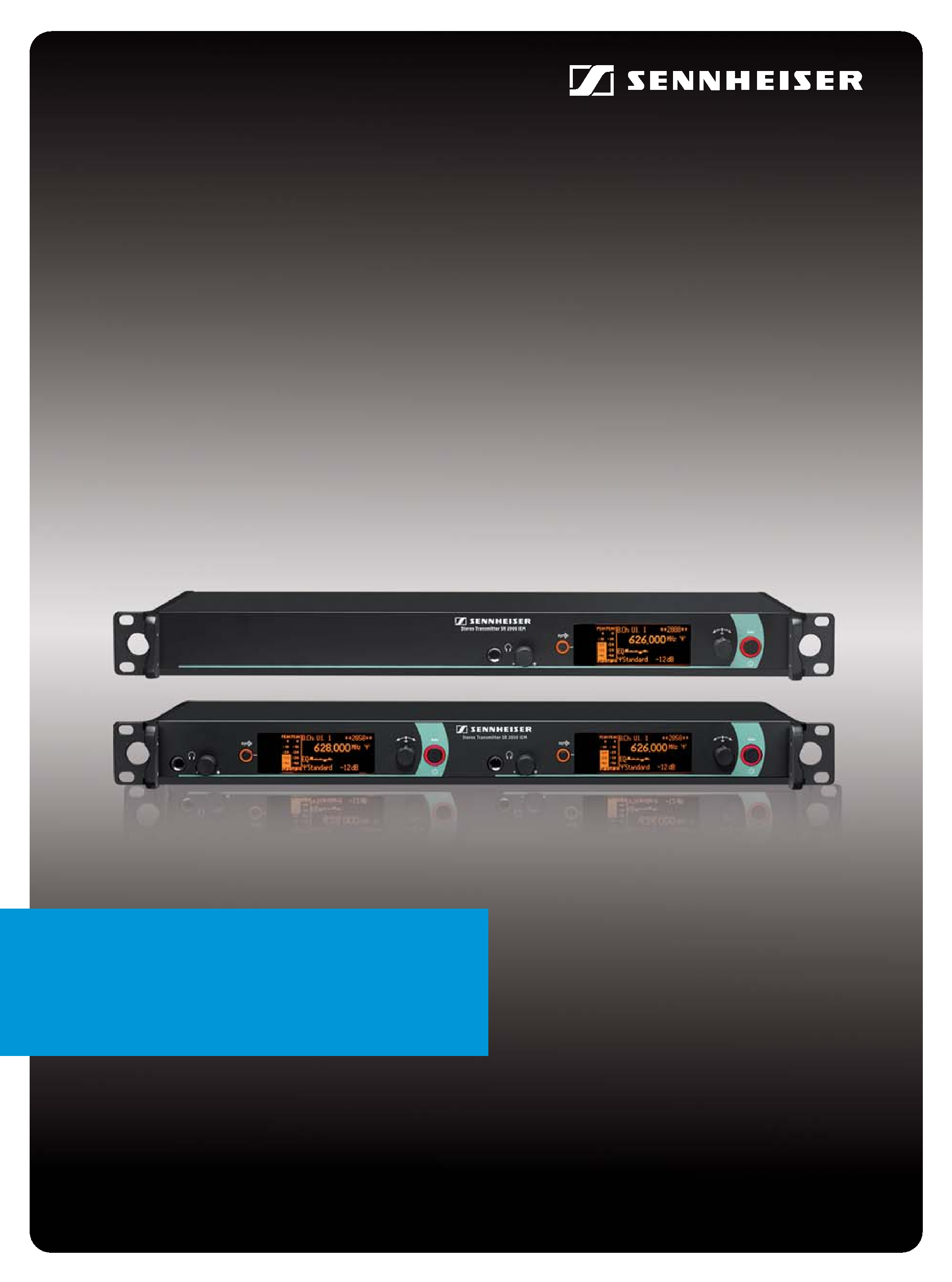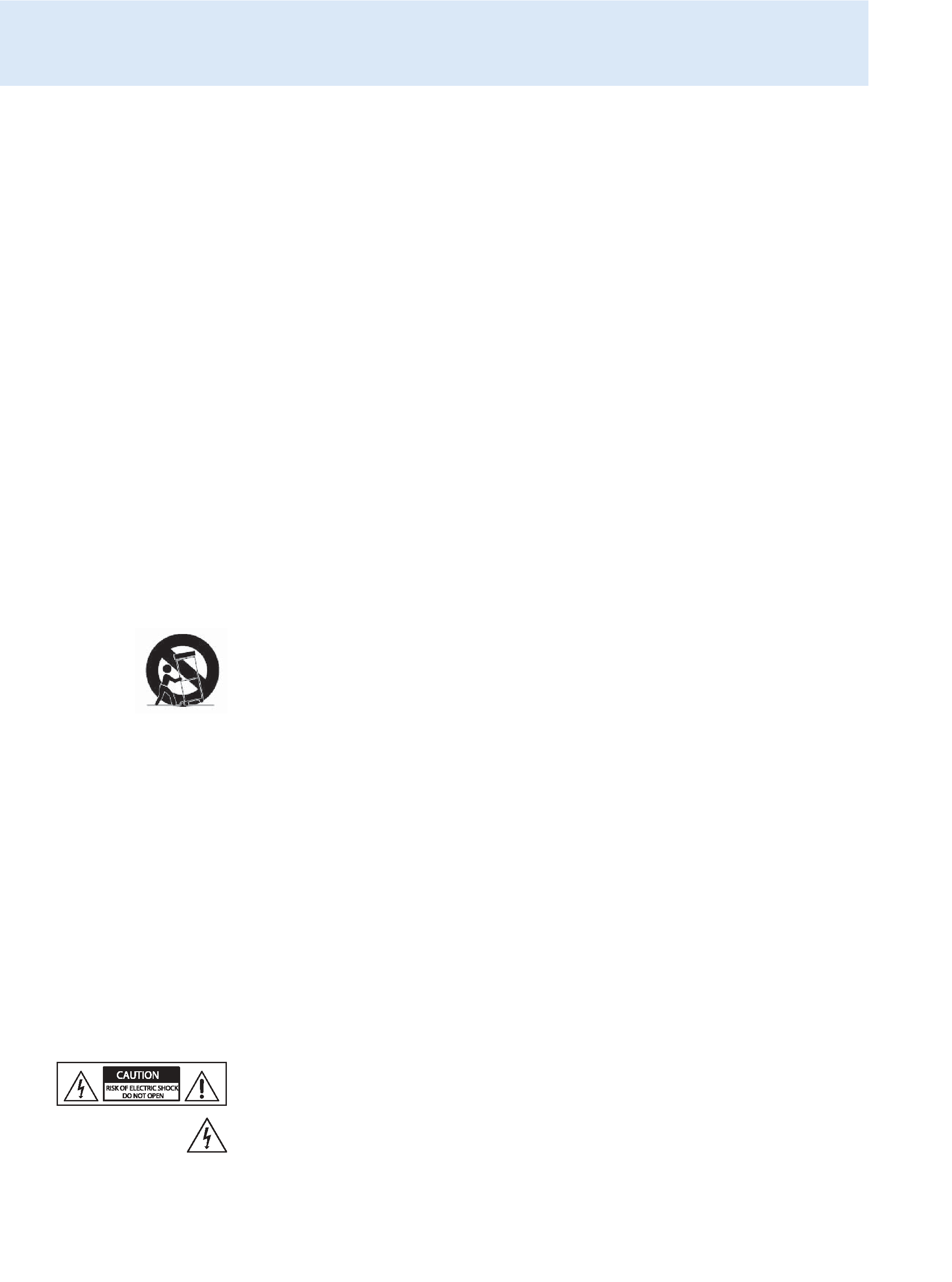
SR
2050 IEM
SR
2000 IEM
Instruction manual


Contents
1
Contents
Important safety instructions ............................................................................................................................................................. 2
The SR 2000 IEM and SR 2050 IEM transmitters ............................................................................................................................. 4
The frequency bank system .............................................................................................................................................................. 4
Areas of application ............................................................................................................................................................................ 5
Delivery includes ..................................................................................................................................................................................... 5
Product overview .................................................................................................................................................................................... 6
Overview of the SR 2000 IEM/SR 2050 IEM transmitter ............................................................................................................ 6
Overview of the displays ................................................................................................................................................................... 7
Putting the transmitter into operation ............................................................................................................................................. 8
Setting up the transmitter on a flat surface ................................................................................................................................. 8
Mounting the transmitter into a 19" rack ..................................................................................................................................... 8
Connecting the antennas .................................................................................................................................................................. 8
Connecting an audio source to the input sockets ...................................................................................................................... 11
Daisy chaining audio signals ........................................................................................................................................................... 11
Connecting devices to the output sockets ................................................................................................................................... 12
Connecting transmitters in a network .......................................................................................................................................... 12
Connecting the mains cable ............................................................................................................................................................ 12
Using the transmitter .......................................................................................................................................................................... 13
Switching the transmitter on/off .................................................................................................................................................. 13
Deactivating the lock mode temporarily ...................................................................................................................................... 14
Activating/deactivating the RF signal .......................................................................................................................................... 14
Monitoring the audio signal via headphones .............................................................................................................................. 15
Synchronizing transmitters and EK 2000 IEM receivers via the infra-red interface ........................................................... 15
Using the operating menu .................................................................................................................................................................. 18
The buttons ........................................................................................................................................................................................ 18
Overview of the operating menu ................................................................................................................................................... 18
Working with the operating menu ................................................................................................................................................ 20
Adjusting settings via the operating menu ................................................................................................................................... 22
The main menu "Menu" ................................................................................................................................................................... 22
The extended menu "Advanced Menu" ....................................................................................................................................... 25
Synchronizing the transmitter with the EK 2000 IEM receiver .................................................................................................. 30
Synchronizing the transmitter with an EK 2000 IEM receiver individual operation ........................................................ 30
Synchronizing transmitters with EK 2000 IEM receivers multi-channel operation ......................................................... 30
Using freely selectable transmission frequencies ...................................................................................................................... 31
Cleaning the transmitter ..................................................................................................................................................................... 32
Recommendations and tips ................................................................................................................................................................ 33
Accessories ............................................................................................................................................................................................. 34
If a problem occurs ... ........................................................................................................................................................................... 35
Specifications ......................................................................................................................................................................................... 36
Manufacturer Declarations ................................................................................................................................................................. 38
Index ........................................................................................................................................................................................................ 39
Supplementary information can be found on the SR 2000 IEM and SR 2050 IEM product pages on our
website at www.sennheiser.com.

Important safety instructions
2
Important safety instructions
1.
Read these instructions.
2.
Keep these instructions. Always include these instructions when passing the transmitter
on to third parties.
3.
Heed all warnings.
4.
Follow all instructions.
5.
Do not use this apparatus near water.
6.
Clean only with a dry cloth.
7.
Do not block any ventilation openings. Install in accordance with the manufacturer's
instructions.
8.
Do not install near any heat sources such as radiators, heat registers, stoves, or other
apparatus (including amplifiers) that produce heat.
9.
Do not defeat the safety purpose of the polarized or grounding-type plug. A polarized
plug has two blades with one wider than the other. A grounding type plug has two blades
and a third grounding prong. The wide blade or the third prong are provided for your
safety. If the provided plug does not fit into your outlet, consult an electrician for
replacement of the obsolete outlet.
10. Protect the power cord from being walked on or pinched, particularly at plugs,
convenience receptacles, and the point where they exit from the apparatus.
11. Only use attachments/accessories specified by the manufacturer.
12. Use only with the cart, stand, tripod, bracket, or table specified by the manufacturer, or
sold with the apparatus. When a cart is used, use caution when moving the cart/
apparatus combination to avoid injury from tip-over.
13. Unplug this apparatus during lightning storms or when unused for long periods of time.
14. Refer all servicing to qualified service personnel.
Servicing is required when the apparatus has been damaged in any way, such as power
supply cord or plug is damaged, liquid has been spilled or objects have fallen into the
apparatus, when the apparatus has been exposed to rain or moisture, does not operate
normally, or has been dropped.
15. To completely disconnect this apparatus from the AC mains, disconnect the power supply
cord plug from the AC receptacle.
16. WARNING: To reduce the risk of fire or electric shock, do not expose this apparatus to rain
or moisture.
17. Do not expose this equipment to dripping or splashing and ensure that no objects filled
with liquids, such as vases, are placed on the equipment.
18. The mains plug of the power supply cord shall remain readily operable.
Hazard warnings on the rear of the transmitter
The label shown on the left is attached to the rear of the transmitter. The symbols on this
label have the following meaning:
This symbol is intended to alert the user to the presence of uninsulated dangerous voltage
within the transmitter's enclosure that may be of sufficient magnitude to constitute risk of
fire or electric shock.

Important safety instructions
3
This symbol is intended to alert the user to the risk of electric shock if the transmitter is
opened. There are no user serviceable parts inside. Refer servicing to qualified personnel only.
This symbol is intended to indicate the presence of important operating and maintenance
instructions in the literature accompanying this transmitter.
Overloading
Do not overload wall outlets and extension cables as this may result in fire and electric shock.
Replacement parts
When replacement parts are required, be sure the service technician uses replacement parts
specified by Sennheiser or those having the same characteristics as the original part.
Unauthorized substitutions may result in fire, electric shock, or other hazards.
Safety check
Upon completion of any service or repairs to this device, ask the service technician to perform
safety checks to determine that the device is in safe operating order.
Danger of hearing damage due to high volumes
This is a professional transmitter. Commercial use is subject to the rules and regulations of
the trade association responsible. Sennheiser, as the manufacturer, is therefore obliged to
expressly point out possible health risks arising from use.
This transmitter is capable of producing sound pressure exceeding 85 dB(A). 85 dB(A) is the
sound pressure corresponding to the maximum permissible volume which is by law (in some
countries) allowed to affect your hearing for the duration of a working day. It is used as a
basis according to the specifications of industrial medicine. Higher volumes or longer
durations can damage your hearing. At higher volumes, the duration must be shortened in
order to prevent hearing damage. The following are sure signs that you have been subjected
to excessive noise for too long a time:
· You can hear ringing or whistling sounds in your ears.
· You have the impression (even for a short time only) that you can no longer hear high
notes.
Intended use
Intended use of the SR 2000 IEM and SR 2050 IEM transmitters includes:
· having read these instructions, especially the chapter "Important safety instructions" on
page 2,
· using the device within the operating conditions and limitations described in this
instruction manual.
"Improper use" means using the device other than as described in these instructions, or
under operating conditions which differ from those described herein.
